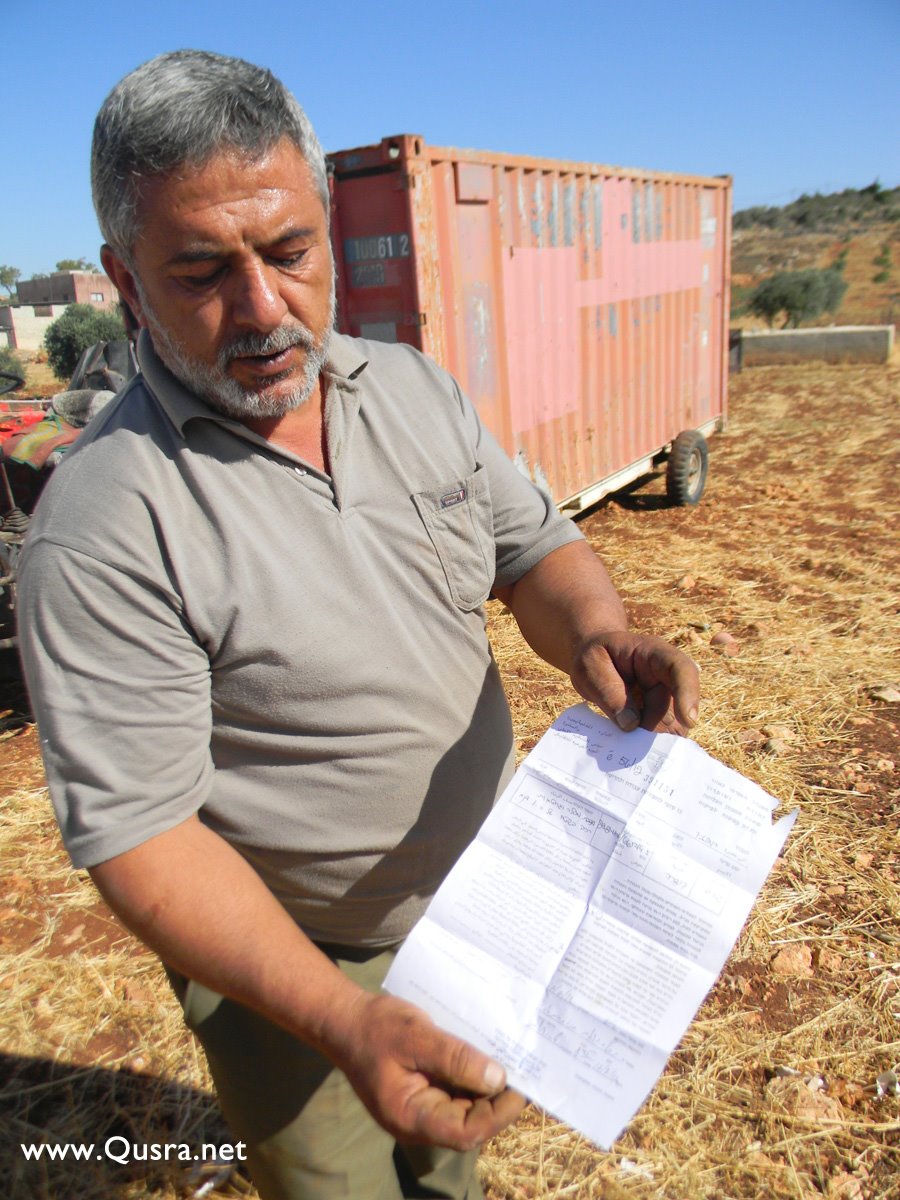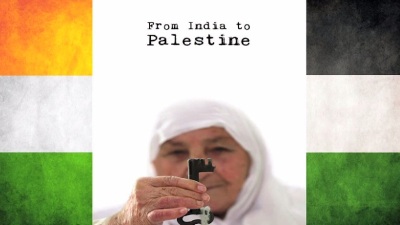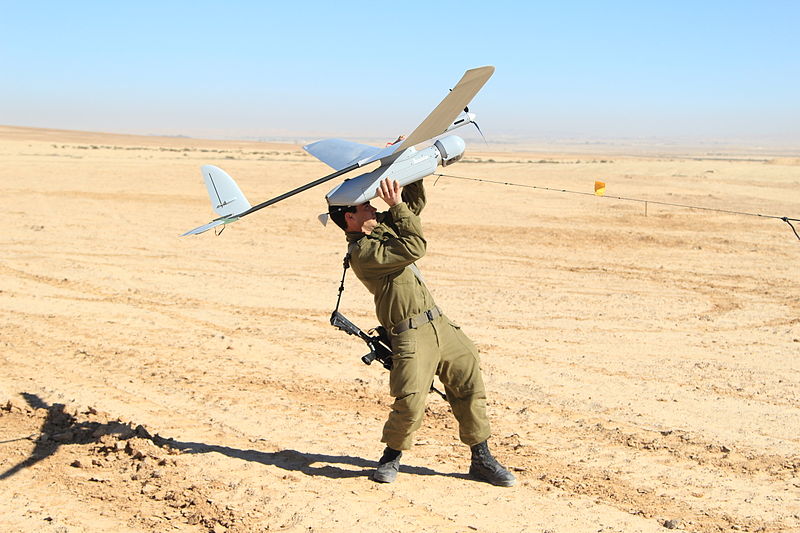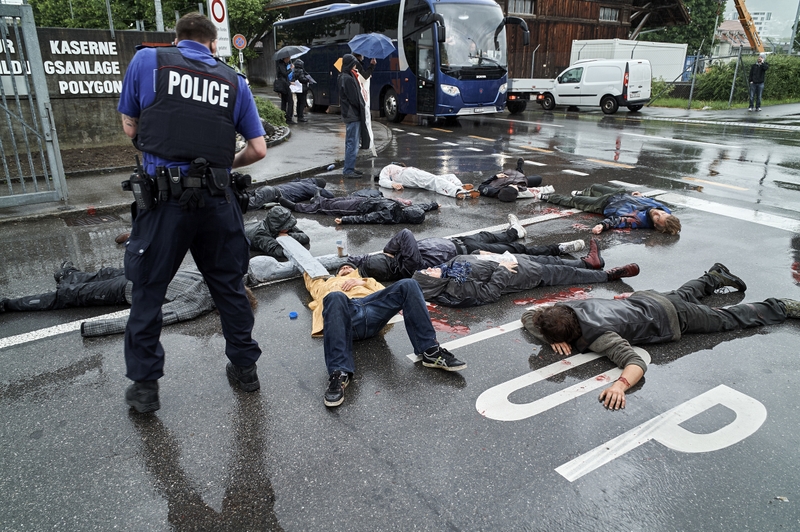This report gives a summary of growing colonization and ethnic cleansing during the month of May as well as the human rights violations enacted by the occupation authorities during this period in order to repress popular resistance and hinder journalists from reporting about the reality of Palestinian life under occupation and apartheid.
The report in numbers:
• 4 civilians killed during the month of May
• 175 civilians injured including 18 children and women
• 352 arrested including 50 children and 14 women
• Official approval for the construction of 2575 housing units and hotel rooms
• Frequent attacks by settlers against the Palestinian citizens and their property
• Demolition and demolition orders to halt construction as well as the evacuation of 88 homes, wells, commercial agricultural and animal facilities.
• The uprooting and destruction of 580 tress and the burning of 300 Dunums of land planted with wheat and barley
• The violation of 30 journalists
The report in depth:
1) The violation of the right to life
Killings: The prisoner Rami Kamal Shalamish (33 years old) from Burqin, Jenin, has been killed due to the deliberate policy of medical negligence by the prison authorities. He was injected medicine in the wrong veins in prison, where he has been held since 2006. Omaran Omar Abu-Dahim (41 years old) from Jabel Mukaber, Jerusalem, was killed when the occupying police forced shot him. Sa’id Al-Nadi (50 years old) from the Jabalia Refugee camp in the Gaza strip, died of wounds sustained in the recent aggression of the occupation forces in the Gaza Strip. Hamza Omar Ahmed, a 3 years old child, died as a result of being run over by a car driven by an Israeli settler in the Tur neighborhood in Jerusalem.
Injuries: 175 Palestinians were injured in attacks against Palestinian citizens by the occupying forces and settlers in the occupied West bank, 18 of which were women and minors. Most of them are from occupied Jerusalem, which is still continuously suffering from the aggression of occupation forces and settlers. Furthermore, many civilians involved in popular marches have been injured. Most of the protests have been held in areas adjacent to the wall and other areas threatened with confiscation, settlement and displacement. Not only Palestinian but as well international human rights defenders have suffered injuries in the violent repression enacted against the protests.
2) The ongoing suffering of the Palestinian prisoners
At least 352 Palestinians were arrested from different parts of the occupied lands, amongst them 14 Palestinian women. The majority were released after brief periods of detention. At least 50 children and minors under the age of 18 were also arrested. Most of the arrests were concentrated in Jerusalem, which saw the largest number of arrests (at least 115 arrests), followed by the city of Hebron with 78 detained, then Ramallah which saw the arrest of at least 58 civilians. Following that, Bethlehem recorded 30 arrests, Nablus saw the arrest of 29 individuals, 28 detainees were counted in Jenin, 4 in Tubas, 3 in Tulkarem. Both Salfeet and Qalqilya saw the arrest of one individual. In addition to this, the occupying forces arrested at least five civilians in the Gaza Strip, two of whom were arrested whilst trying to cross the razor wire fencing erected along the border that closed off Gaza from the rest of the world. Two others were arrested when the Israeli naval forces attacked their fishing boats. Ms. Sana Abu-Kawik, 42 years of age, was arrested at the Beit Hanoun crossing during her return from visiting her family in Ramallah.
3) Settlements and settler attacks
The occupying Israeli authorities have approved the construction of 900 new settlement housing units in the illegal settlement of Ramot Shlomo. Furthermore, the so-called Israeli Planning and Building Committee has approved the building of 90 new settlement housing units in the Har Homa settlement. The Israeli Ministry of Housing has permitted the building of 85 new settlement housing units in the settlement of Givat Ze’ev, in addition to giving the permits for the construction of 1500 hotel rooms on a piece of land on Mount Jabel Mukaber. All of these settlements are built on the land of Palestinian citizens in the city of Jerusalem. On top of that, the Israeli government has also allocated $25 million for the expansion of settlement activities and Judaization in Jerusalem.
A group of settlers from the settlement Yitzhar planted a number of grape seedlings in preparation to take over a piece of land (10 Dunums) in the village of Huwara, district of Nablus. Few kilometers away, settlers started the settlement “Ihya" by razing land to expand the settlement established on the territory belonging to the Palestinian citizens in the village of Jaloud in Nablus. A group of 100 settlers broke into the “Al-Mas’udia” park in Nablus and attacked the guard. Settlers from the Ramat Yishai settlement burnt the house of a citizen in the Tel Rumeida neighborhood, Hebron. Additionally, a group of settlers poured a form of toxic substance over a child named Moatassem Al-Mutahsab near the Ibrahimi mosque (Hebron), which as a result led to severe burning and he had to be recoverd in the hospital. Furthermore, a group of settlers ran over Shadi Ghorab from At-Tur and Hani Iskafi from Silwan in Jerusalem. A group of settles also attacked and injured Natalie Abed Rabho from Jerusalem and Mervat Abu-Ramila from Hebron. Settlers have taken control of the old building “Beit Al-Baraka” adjoining to the Church positioned on approximately 40 dunums between the settlement block "Gush Etzion" and Al-Aroub refugee camp, north of Hebron. The daily incursions into Al-Aqsa Mosque by settler groups, who shielded by Israeli police attempt to perform Talmudic rituals, has increased as well as the settler attacks on guards, amid ongoing restrictions posed on Palestinian men and women to enter the mosque.
4) Home demolitions and the attack on property
Demolitions: Major demolitions have been carried our in Jerusalem district. Israeli forces demolished a two-story building, consisting of 8 apartments, owned by Hussain Alqom from Beit Hanina. They also demolished an apartment and 3 commercial premises, which were under construction and owned by Anas Karma from Silwan. A two-story residential building under construction, owned by Ahmad Abu-Sinyina, was also destroyed. Occupation forces demolished the home of the Nassar family andthe foundations of a house belonging to the Sawih family in the Ras al-Amud neighbourhood. In the Sheikh Jarrah neighbourhood they demolished the walls of Asma Khadir’s house. In Hebron district, a home belonging to Adnan Al-Badran in Idhna was completely destroyed. In Al-Khader (Bethlehem governorate), a shelter owned by Jamal Alaab from was also completely destroyed. The occupation forces demolished wells, used to collect water, owned by Mutliq Abu-Layla in the village of Qusin (Nablus governorate). Three wells in the Khla Al-Natah area belonging to Nadmi Qaseem from the village of Kafr Kadoum (Qalqilyah governorate) were demolished. In te Jordan Valley, three vegetable stands were demolished in the village of Zubayat.
Demolition and eviction orders: In Jericho and the Jordan Valley governorate, the Israeli occupation forces sent out notifications to destroy three homes in Al-Jiftlik and handed over demolition orders to six residents in Khirbet Fasayil. In Jerusalem area, occupation forces sent out three home demolition orders to the Jaahilin family in Al-Eizariya. Adding to this, the Israeli Supreme Court issued the decision to demolish 8 buildings consisting of 23 apartments in the area of Semiramis, north of Jerusalem, due to the settlers claiming ownership of the land. 27 families in Khrba Al-Maaliha (Jersualem governorate) have received orders to evacuate the area. These evacuation orders were granted under the pretext of military training. Furthermore, the Israeli occupation forces issued demolition orders for a number of houses, commercial shops and schools in the village of Beit Skarya (Bethlehem governorate). Also issued was a notice to remove an electricity grid measuring the length of 800 meters in the village of Al-Koum (Hebron governorate), Finally, finally, an order to stop construction on a football stadium in Salfit was issued.
5) The uprooting of trees, the burning of crops and the confiscation of property
Israeli soldiers and settlers cut down and destroyed more than 580 fruit and forest trees. Whilst the occupation forces uprooted 300 forest trees in a nature reserve owned by Imran Abu-Sabih in the village of Zif (Hebron), settlers cut down 10 olive trees in the town of Yatta (Hebron governorate). In addition to this, a group of settlers burnt 250 olive trees in the village of Jab’a as well as uprooting 10 olive trees in the town of Al-Khader (Bethlehem governorate). Occupation forces also burnt crops during their military training on the agricultural land in the area of Khirbet al-Tawil in Aqraba/Nablus. Additionally, Israeli forces burnt agricultural land measuring 300 Dunams which was planted with wheat and barley in the northern Jordan Valley.
Furthermore, the occupying forces confiscated a bulldozer under the pretext of it entering a ‘restricted area’ in the village of Hizma. Israeli forces confiscated a number of computers from the Health Work Committees in the town of Shu'fat (Jerusalem governorate).
6) Attacks on journalists to prevent them from telling the truth
The month of May saw 30 violations against journalists and media personnel by the Israeli occupation, in the context of the systematic Israeli policy to create obstacles to reporting and the dissemination of the reality lived by the Palestinian people. The pace of Israeli attacks against Palestinian journalists have risen in recent months, particularly in the occupied city of Jerusalem, where recently Israeli soldiers and ultra-extremist settlers deliberately assaulted, both physically and verbally, press crews while they were covering clashes near the mosque on the anniversary of the occupation of the city of Jerusalem. Only during that day approximately 15 journalists have been injured due to attacks by both the settlers and Israeli soldiers.
There are various forms of repression enacted against Journalists. Firstly, journalists are regularly beaten, assaulted or threatened, with the suffocation from tear gas resulting in the injury of dozens of journalists every week. The Italian journalist Samantha Comizzoli was injured during coverage of the march commemorating the Nakba in the village of Hawara, south of Nablus. Besides the use of the means of violence, humiliation and the degrading treatment of human dignity, the occupation authorities additionally arrest and detain journalists and raid their homes and confiscate their media equipment. This has happened to journalist Ahmed Betawi, who was arrested by Israeli forces as they entered the Balata refugee camp in Nablus. In another instance, the occupation forces raided a journalist Abdel-Hafiz Hashlamoun house in the city of Hebron, and handed his son, journalist Iyad, a notification summoning him to be interviewed by the Israeli occupation intelligence services. As a third pattern of repression, the occupation authorities prevent journalists from filming and covering events and marches. This month, the Israeli forces handed over a decision to ban journalist Mohammed Al-Qazaz from the Al-Aqsa Mosque for a week due to his coverage of settler incursions into the mosque.




